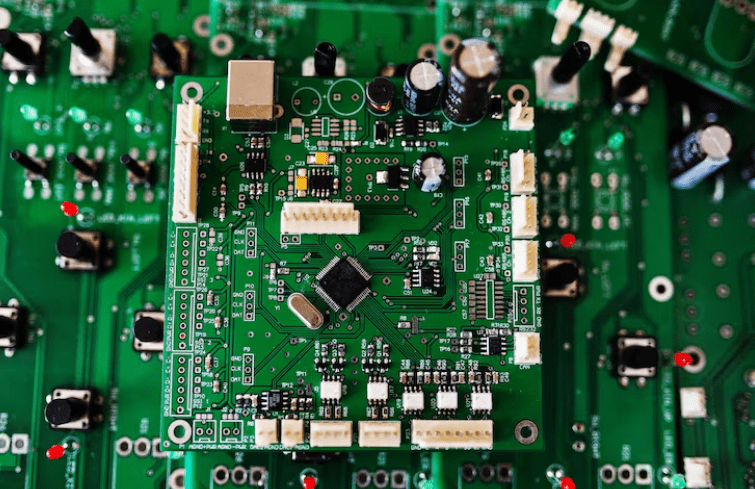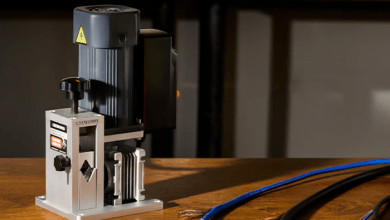
One of the biggest technical advances in contemporary transportation is the electric car. Unlike any other electronic application, the intricate network of specialized printed circuit boards that power each svelte electric car must withstand harsh environments. Massive power loads, high heat generation, and strict safety regulations are some of the particular difficulties that these EV-grade PCBs confront that conventional circuits never experience. The level of technical skill needed to produce these durable circuit boards is pushing the limits of safety procedures, thermal management, and materials research. Developing a comprehensive hardware solution that addresses these challenges requires anyone working in the quickly growing electric car sector to be aware of these specific design specifications.
Power Management Mastery: Handling Massive Electrical Currents
PCBs for electric vehicles have to handle electrical currents that are much higher than those in traditional electronics. Current-carrying circuit boards must be able to handle the hundreds of amperes that modern EV battery systems may deliver. To properly manage these high power demands, engineers use specialized via architectures, thick copper traces, and numerous layers. Precise power distribution, voltage management, and efficiency improvement are all part of the problem, which goes beyond basic current handling. Elegant power management integrated circuits are used to ensure effective transfer of energy between the battery and the motor by complementing robust pcb design service. These high-power circuits must be reliably able to remain operational throughout thousands of charge cycles with automotive use in hostile environments that have electromagnetic interference, vibration and extreme temperatures.
Thermal Engineering Excellence: Conquering Heat Generation Challenges
One of the most important components of EV PCB design is heat control. The high thermal power of high-power electronics will destroy parts within seconds unless well controlled. Advanced methods of thermal designs, as integrated in the engines, include use of thermal vias, embedded heat sinks and the materials of the substrates that are specifically advanced in the capability of dissipating the heat. Copper planes are placed strategically to ensure that they give efficient modes of heat transfer and also to direct heat to the cooling mechanisms or heat sinks. To ensure optimum cooling efficiency, board design and temperature dispersion forecasts are supported with the help of complex thermal modeling software. The goal is to maintain optimum operating temperatures, even in severe driving conditions, including rapid acceleration, climbing hills or rapid charging which puts a load on the electrical systems.
Safety-First Design Philosophy: Meeting Rigorous Automotive Standards
Electric vehicle safety regulations are some of the strictest in the automotive sector. International safety standards, such as ISO 26262 for functional safety and other electromagnetic compatibility criteria, must be met by EV PCBs. Several levels of safety are put in place by design engineers, such as fail-safe mechanisms that kick in under unusual circumstances, thermal shutdown circuits, and overcurrent protection. Isolation barriers shield low-voltage control circuits from high-voltage power systems, keeping passengers or delicate components safe from hazardous voltage levels. Critical operations are guaranteed to continue even in the event that primary circuits fail thanks to redundant safety mechanisms. Potential failure modes and their effects on the safety of the vehicle and its occupants must be taken into account in every component location, trace routing, and connection.
Material Science Innovations: Advanced Substrates for Extreme Conditions
The harsh conditions found inside electric cars are too much for conventional PCB materials to handle. Engineers use cutting-edge substrate materials like as metal-core PCBs, high-temperature ceramics, and specialty polymer composites made for automotive applications. Superior mechanical strength, heat conductivity, and resistance to automotive fluids like coolants and oils are all provided by these materials. To avoid mechanical problems during thermal cycling, glass transition temperatures need to stay steady much above typical operating limits. In high-frequency switching circuits, which are frequently found in motor controllers and onboard chargers, low-loss dielectric materials reduce power dissipation. When choosing materials, long-term aging effects are also taken into account to guarantee that mechanical and electrical characteristics stay steady under constant mechanical and thermal load for the duration of the vehicle’s anticipated lifespan.
Electromagnetic Compatibility: Taming Electrical Interference
Sensitive electrical equipment may experience interference from the difficult electromagnetic environments created by electric cars. High-power switching circuits generate significant electromagnetic interference that must be controlled to prevent interference with sensors and personal entertainment devices, or even communications systems. Precision layout PCB design to minimize both the generation and sensitivity of EMI go hand in hand with the use of advanced shielding, careful ground plane design, and intelligent component location by the PCB designer. Multilayer stackups with dedicated power and ground planes provide excellent electromagnetic shielding which can be achieved without degrading the signal integrity. In order to remove undesirable frequencies at their source, filter circuits and suppression components are directly incorporated into PCB designs. Cable connections and enclosure interfaces that allow electromagnetic radiation to enter or exit the system are given further consideration.
Reliability Under Stress: Surviving Harsh Automotive Environments
PCBs are exposed to mechanical pressures in automotive settings that are not present in conventional electronics applications. Exceptional dependability is required due to the constant vibration from road surfaces, temperature cycling from seasonal weather variations, and exposure to moisture and pollutants. To guarantee long-term endurance, engineers use stress-relieving methods, conformal coatings, and strengthened solder junctions. Accelerated aging tests validate design decisions prior to production by simulating years of automobile use in condensed periods. Automotive-grade components with improved temperature ranges and vibration resistance are prioritized in component selection. In order to avoid stress concentrations that can cause solder connection failures or trace cracking during thermal cycling events, mechanical design takes into account the variations in thermal expansion across materials.
High-Voltage Isolation: Protecting People and Systems
If sufficient isolation is not maintained, the voltages at which electric cars run can be fatal. Effective electromagnetic shields between low-voltage control systems and high-voltage power circuits need to be implemented in PCB designs. Contamination or even moisture may not be sufficient to bridge dangerous voltages between circuit board traces since the creep and the clearance distances are much larger than required in conventional electronics. Electrical separation is achieved while permitting the essential signal transmission through the use of isolation transformers, optocouplers, and capacitive isolation devices. Particular attention is given to production procedures like drilling, routing, and cleaning that can jeopardize isolation.
Conclusion
An outstanding feat of engineering brilliance is the creation of EV-grade PCBs. During the lifetime of their operation, these specialist circuit boards should be capable simultaneously to handle large power loads, extreme temperature loads and absolute safety. The importance of such advanced PCB technologies is bound to rise as the world accepts electric vehicles and works on further innovation-oriented progress in materials, design technique, semiconductor engineering, and production processes.




